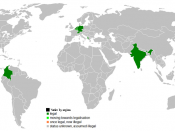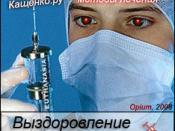Medically Assisted Suicide
�
As we debate the moral and ethical ramifications of euthanasia, the medical aspect must be included as well. Why? More and more breakthroughs are being discovered by the medical community, making the acceptance of euthanasia increasingly difficult or increasingly easy -with or without factoring the teachings and protocol of various religious doctrines and leaders around the world into the equation. Our society is reaching a higher average age as Baby Boomers continue to retire as well as live longer, on average. Between 1960 and 2000, we spent a lot more per person on medical care and gained 6.97 years of life expectancy. (Miller, 2006) According to Gerald A. Larue, dramatic increases in human longevity, made during the twentieth century, have transformed the expected life span at birth in developed countries from 47 years in 1900 to the late '70s today and in developing countries to just over 60 years of age today.
It is anticipated that by the year 2020, the elderly will constitute about 25 percent of the world population (Larue, 1999). With more and more of our society reaching an advanced age, we need to ask ourselves whether the medical community and todays researchers are able to support the number of elderly citizens living a longer torturing and painful life. What is black today becomes white tomorrow, leaving us all in a gray area when it comes to physician-assisted suicide. But one constant remains: The decision to end a life resides with only one person, yourself.
This issue is a hot button for many people as they rely on their own religious teachings and beliefs to support their sanctity of life position. Catholic teachings condemn euthanasia as a "crime against life" and issued their official document, The Declaration of Euthanasia in 1980. Protestantism, Judaism,


